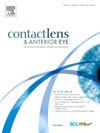Global practices of tear fluid collection, storage, and molecular analysis – A questionnaire by the Tear Research Network
IF 3.7
3区 医学
Q1 OPHTHALMOLOGY
引用次数: 0
Abstract
Purpose
While tear fluid biomarkers are now widely studied, agreement on best practices for sample collection, storage, processing and analysis is still being built. To promote the application of tear fluid biomarkers and to encourage the generation of high‐quality data, the aim of this survey was to understand current practices and perspectives.
Methods
The Tear Research Network coordinated a self-administrated, digital survey between April 2023 and April 2024. The survey obtained information from 59 independent investigators and laboratories across 21 countries on demographics, tear fluid collection methods, storage conditions, processing steps, analysis techniques, and current and future perspectives for tear fluid research.
Results
Most respondents were based in the US (24%), followed by the UK and India (10% each). Schirmer’s strips were the preferred tear collection method (44%). Protein assays were the most favoured analytical technique overall (47%) and for tear fluid collected with Schirmer’s strips (42%). More than 80% of the laboratories did not employ normalization strategies to account for sample volume variability in collection methods other than Schirmer’s strips and capillaries. A significant majority (91%) agreed on the need to develop internationally accepted guidelines, with 81% indicating that they would modify their protocols accordingly.
Conclusions
This survey provides a global overview of tear fluid biomarker research practices, highlighting substantial variability in methodologies and a pressing need for standardised protocols. Addressing these inconsistencies through international guidelines could enhance reproducibility, facilitate global collaboration, and accelerate the clinical translation of tear fluid biomarkers.

泪液收集、储存和分子分析的全球实践——泪液研究网络的问卷调查。
目的:虽然泪液生物标志物现在被广泛研究,但关于样本收集、储存、处理和分析的最佳做法仍在建立中。为了促进泪液生物标志物的应用并鼓励产生高质量的数据,本调查的目的是了解目前的做法和观点。方法:撕裂研究网络于2023年4月至2024年4月协调了一项自我管理的数字调查。该调查从21个国家的59个独立调查人员和实验室获得了关于人口统计、泪液收集方法、储存条件、处理步骤、分析技术以及泪液研究的当前和未来前景的信息。结果:大多数受访者来自美国(24%),其次是英国和印度(各占10%)。席尔默泪条是首选的泪液收集方法(44%)。蛋白质测定是最受欢迎的分析技术(47%),而席默氏试纸采集的泪液是最受欢迎的分析技术(42%)。超过80%的实验室没有采用归一化策略来解释除席尔默试纸和毛细管法以外的采集方法中的样品量变化。绝大多数人(91%)同意有必要制定国际公认的指导方针,81%的人表示他们会相应地修改他们的方案。结论:这项调查提供了泪液生物标志物研究实践的全球概况,强调了方法的实质性变化和对标准化方案的迫切需要。通过国际准则解决这些不一致可以提高可重复性,促进全球合作,并加速泪液生物标志物的临床翻译。
本文章由计算机程序翻译,如有差异,请以英文原文为准。
求助全文
约1分钟内获得全文
求助全文
来源期刊

Contact Lens & Anterior Eye
OPHTHALMOLOGY-
CiteScore
7.60
自引率
18.80%
发文量
198
审稿时长
55 days
期刊介绍:
Contact Lens & Anterior Eye is a research-based journal covering all aspects of contact lens theory and practice, including original articles on invention and innovations, as well as the regular features of: Case Reports; Literary Reviews; Editorials; Instrumentation and Techniques and Dates of Professional Meetings.
 求助内容:
求助内容: 应助结果提醒方式:
应助结果提醒方式:


